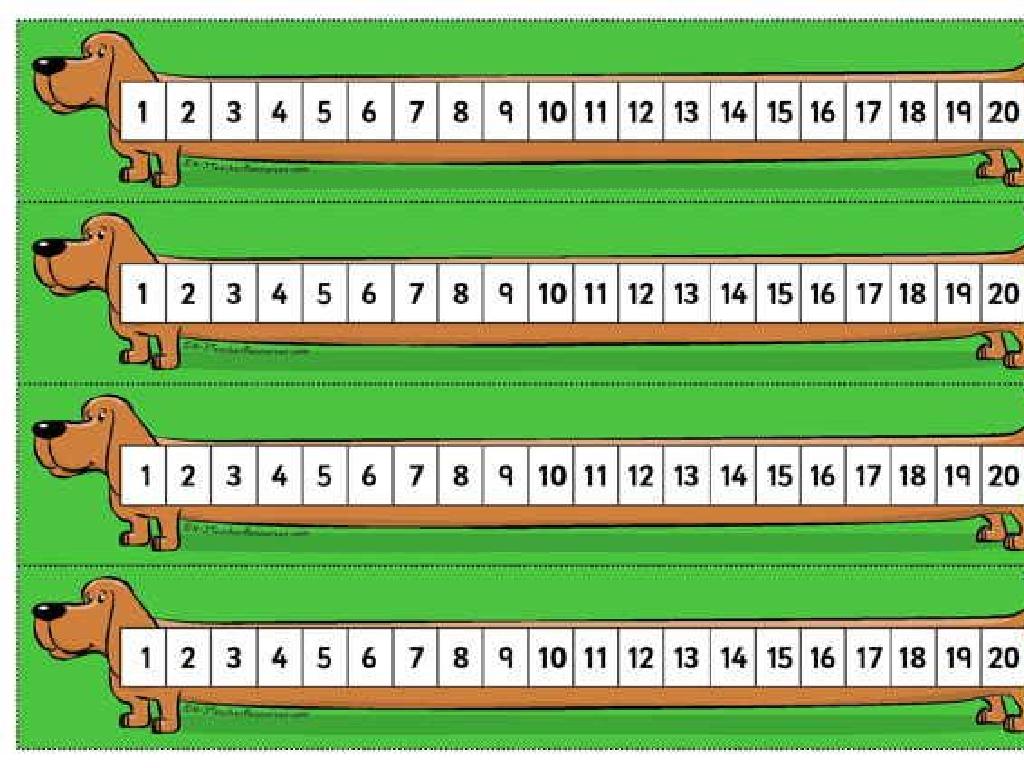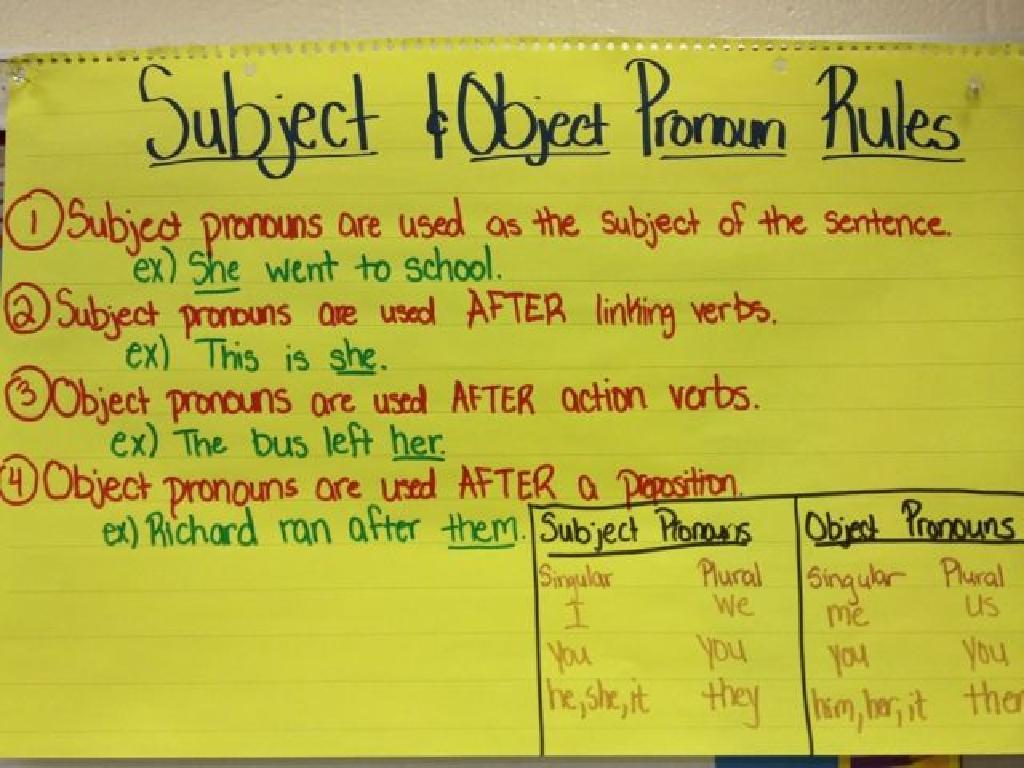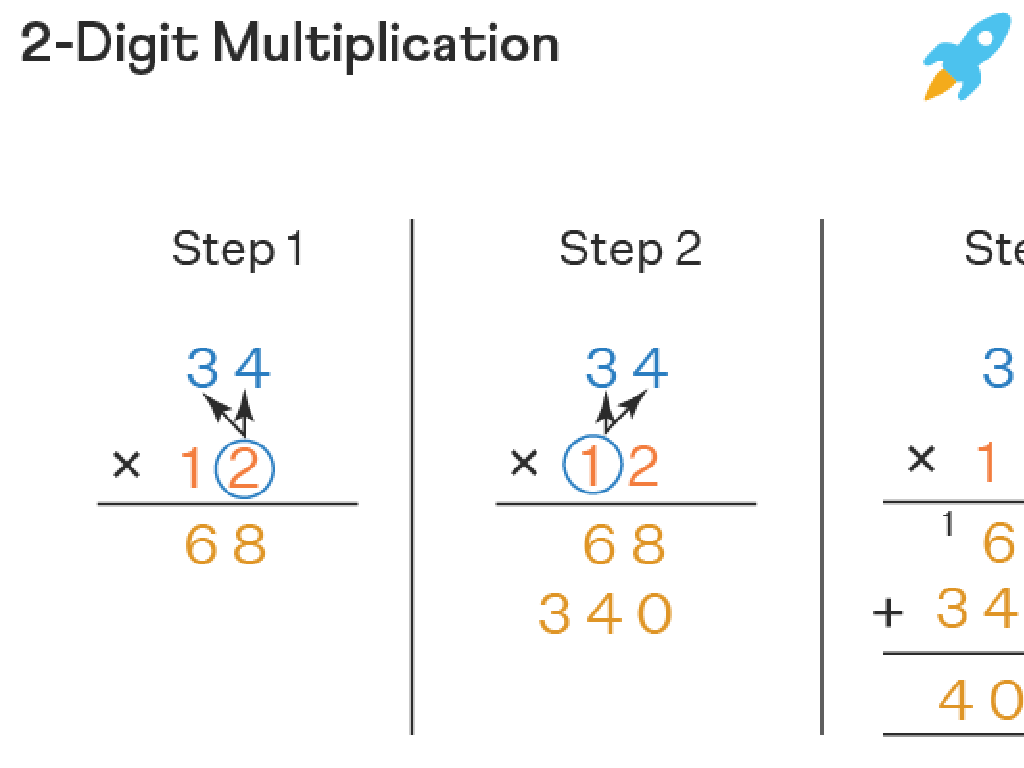Build Cube Trains To Add Up To 10 - Words
Subject: Math
Grade: Kindergarten
Topic: Understand Addition Up To 10
Please LOG IN to download the presentation. Access is available to registered users only.
View More Content
Welcome to Addition!
– Learn to add numbers up to 10
– Use cube trains for addition
– Cubes joined together to show adding
– Make your own cube trains
– You’ll create trains with up to 10 cubes
– Add with fun and colors
– Use different colored cubes to add
|
This slide introduces the concept of addition to Kindergarten students by using a hands-on approach with cube trains. Cube trains are a visual and tactile way to help young learners grasp the idea of combining numbers to make new ones. Start by explaining that addition is simply putting together amounts. Show them how to connect cubes to represent this process. Encourage the children to use different colored cubes to represent different numbers, making the learning process more engaging and memorable. By the end of the lesson, each student should be able to construct their own cube train that adds up to 10, demonstrating their understanding of basic addition. The activity should be monitored to ensure that students are correctly adding the cubes and grasping the concept of addition.
Learning Addition with Cube Trains
– Addition combines numbers
– It’s like putting together pieces of a puzzle.
– Like adding groups of toys
– If you have 3 toy cars and 2 dolls, how many toys do you have in total?
– Use the plus sign (+) for addition
– The plus sign is a symbol that tells us to add.
– Practice with cube trains
|
This slide introduces the concept of addition to Kindergarten students by relating it to their everyday experiences, such as combining toys. Explain that addition is the math way of finding out how many items we have when we put groups together. Use tangible examples like toys or blocks to illustrate this point. Show the plus sign and explain that it’s a special symbol used in math to indicate addition. Encourage students to practice by building cube trains, starting with smaller numbers and working up to a total of 10. This hands-on activity will help them visualize the concept of addition and understand how to combine numbers to find a total.
Building Cube Trains to Learn Addition
– Cube trains show addition visually
– Connect cubes to form a train
– Pick colorful cubes and snap them together
– Each cube is like adding one
– If we have 4 cubes and add 1, we have 5 cubes in our train
– Make trains that add up to 10
– Can you make a train with 10 cubes?
|
This slide introduces the concept of using cube trains to visually demonstrate addition for Kindergarten students. Start by explaining that each cube represents the number one. As they connect cubes to form a train, they are adding one more each time. This hands-on activity helps them see how numbers add up. Encourage the students to use different colored cubes to make the activity more engaging. As they build, ask them to count out loud to reinforce the concept of addition. The goal is to have them create trains of different lengths, eventually building up to a train with 10 cubes, thereby reinforcing their understanding of addition up to 10.
Let’s Make a Cube Train!
– Start with a single cube
– Add a cube to make two
– ‘One plus one equals two’
– Say each addition aloud
– Helps associate numbers with quantity
– Continue until you have ten
– Practice counting and addition
|
This activity is designed to help Kindergarten students understand the concept of addition by visually and physically adding cubes to create a ‘train’. Starting with one cube, the student will add one cube at a time, saying the addition sentence aloud to reinforce the concept (‘one plus one equals two’, and so on) until they reach ten cubes. This hands-on activity aids in developing counting skills, number recognition, and the basic principles of addition. Teachers should encourage students to count carefully and to speak each addition sentence clearly. It’s also a great opportunity for students to practice fine motor skills as they handle the small cubes. For variation, students can work in pairs or small groups, and they can use different colored cubes to make patterns in their trains.
Adding with Cube Trains
– Cube trains represent numbers
– Combine two trains to add
– Example: 3 cubes + 2 cubes
– A train with 3 cubes joins with a 2-cube train
– Together they make 5 cubes
– We count all cubes to see the total is 5
|
This slide introduces the concept of addition using cube trains, which are a visual and tactile way for Kindergarten students to understand adding numbers. Start by explaining that each cube in the train represents one unit. Show how two smaller cube trains can be connected to form a longer train, which represents the sum of the two numbers. Use the example provided to demonstrate the concept: a 3-cube train added to a 2-cube train equals a 5-cube train. Encourage students to use physical cubes to build their own trains and find different combinations that add up to 10. This hands-on activity will help solidify their understanding of basic addition.
Practice Time: Building Cube Trains
– Build your own cube train
– Start with a train for the number 5
– Use 5 cubes to make a train
– Next, create a train for the number 10
– Use 10 cubes to make a longer train
|
This slide is designed for a hands-on activity where students will practice their addition skills by physically building cube trains. Start by explaining that each cube represents one unit. For the first task, students will use 5 individual cubes to build a train that represents the number 5. Next, they will use 10 cubes to build a train that adds up to 10. This activity helps students visualize the concept of addition and understand that numbers can be constructed by combining smaller numbers. Encourage creativity in how they build their trains. For differentiation, some students may build two trains that add up to 5, while others may be challenged to find different combinations of cubes that add up to 10. Provide assistance as needed and ensure that each student is engaged and understands the objective of the activity.
Class Activity: Cube Train Creations
– Build your own cube trains
– Partner up for a 10-sum train
– Find cubes that add to 10 with a friend
– Share your cube train
– Explain your 10-sum method
– Tell the class how you made 10
|
This activity is designed to help Kindergarten students understand the concept of addition by physically creating trains of cubes that add up to 10. Each student will partner with a classmate to build their cube train. Provide a variety of colored cubes to make the activity engaging. Encourage creativity and ensure that each pair has enough cubes to experiment with different combinations. After building, each pair will present their cube train to the class, explaining how they combined the cubes to reach the total of 10. This will reinforce their understanding of addition and allow them to practice their counting and communication skills. Possible variations for different pairs could include using different colored cubes to represent different numbers, or challenging them to find as many combinations as possible that add up to 10.
Great Job on Addition!
– Proud of your cube train creations
– Addition means joining numbers
– When we add, we put groups of things together to find out how many in total.
– Practice makes perfect
– The more you play with cube trains, the better you’ll get at adding.
– Continue at home with cube trains
– Use your cube trains to keep practicing sums up to 10.
|
This slide is a conclusion to reinforce the concept of addition using cube trains. It’s meant to celebrate the students’ efforts and remind them of the key concept that addition is about combining numbers. Encourage the children to continue practicing at home, emphasizing that practice will help them become more confident in their addition skills. Suggest that parents engage with their children by building cube trains and creating new addition problems together. This will not only reinforce the day’s lesson but also provide a fun, interactive way to learn math.






